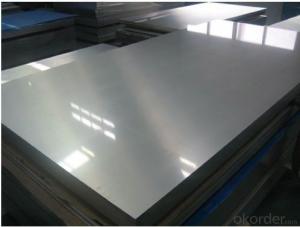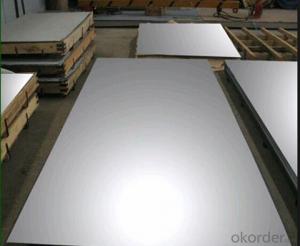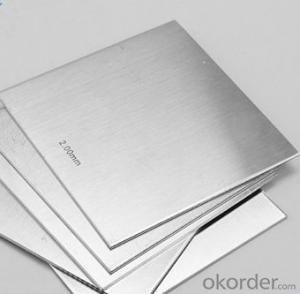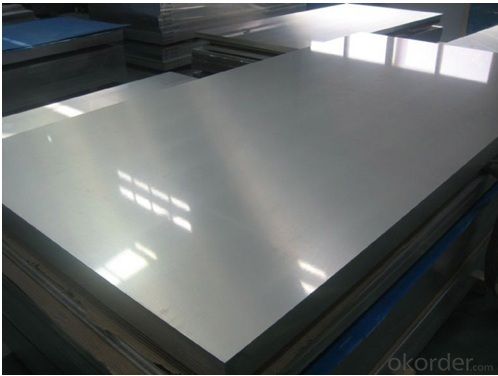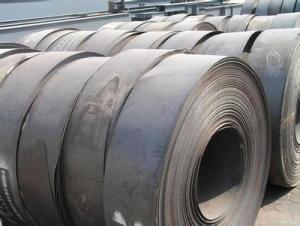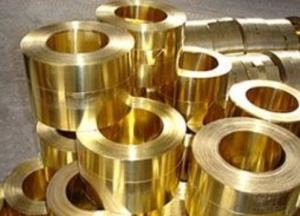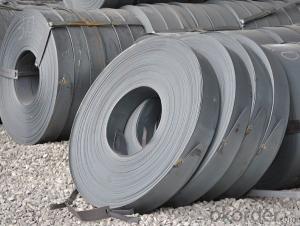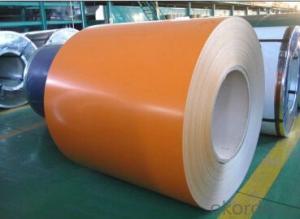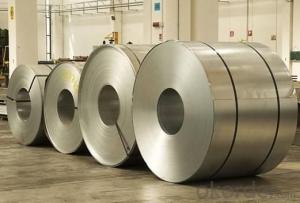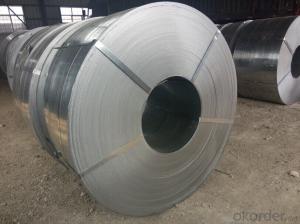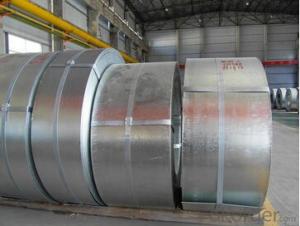HIGH QUALITY STAINLESS STEEL PLATE
- Loading Port:
- Tianjin
- Payment Terms:
- TT OR LC
- Min Order Qty:
- 5 m.t.
- Supply Capability:
- 500 m.t./month
OKorder Service Pledge
OKorder Financial Service
You Might Also Like
Specification
Product Brief Introduction
HIGH QUALITY STAINLESS STEEL PLATE
---Stainless steel plate applies to construction field, ships building industry, petroleum,
chemical industries, war and electricity industries, food processing and medical industry,
boiler heat exchanger,machinery and hardware fields.
Product Features
. Traditional aesthetics outlook
. Suitable for new house or renovation.
. Less joints, watertight
. Long life service
. Tedun also provide relative ridge cap, fasteners and other accessories
Product Specification
Standard:ASTM, GB,JIS,JIS G3302 ASTM 755 EN10169
Grade: DX51D CGCC CS
Thickness: 0.13mm~3.0mm,
Width: 1250,600-1250mm
weight:3-12 MT
Chemical composition:
C | Si | Mn | Cr | Ni | P | S |
0.150 | 0.476 | 11.231 | 12.50 | 0.900 | 0.039 | 0.010
|
FAQ
1. How long will we receive the goods ?
45days after receiving workable L/C
1. how do you control the quality ?
we have our own quality control department ,we will arrange QC person to see the production line ,when goods finish ,before shipment ,our QC person will check the quality as per our test report request ,if the goods is ok ,then we issue the test report ,and we allow the goods shipping ,otherwise will not allow ship the goods.
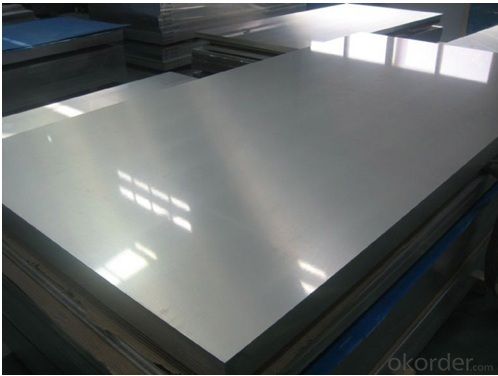
- Q: Are steel strips suitable for making hinges?
- Yes, steel strips are suitable for making hinges. Steel is a strong and durable material that can withstand the stresses and movements associated with hinges.
- Q: How are steel strips used in the production of hand tools?
- Due to their durability and versatility, steel strips find wide application in the manufacturing of hand tools. These strips are typically made from high-quality steel alloys, which offer exceptional strength and wear resistance. In the production process, steel strips are initially cut into desired dimensions and then undergo various forming operations such as bending, stamping, or rolling. This allows the strips to take on the specific shapes required for hand tool components, including blades, handles, or shafts. The flexibility of steel strips enables the production of a diverse range of tool designs to meet varied application needs. Once the components are shaped, they undergo further processing through heat treatment, which enhances their hardness and toughness. This treatment ensures that the hand tools can endure significant force, impact, and wear during use, making them highly durable and long-lasting. Steel strips are also utilized in the production of hand tool accessories, such as springs, clips, or fasteners. These components play crucial roles in enhancing the functionality and usability of the tools. For example, springs made from steel strips provide the necessary tension or pressure required for certain hand tools, like pliers or clamps. Furthermore, steel strips can be coated or plated with protective finishes, such as chrome or nickel, to enhance their corrosion resistance and improve the overall aesthetics of the hand tools. This added layer of protection ensures that the tools remain in good condition even in challenging working environments. In summary, steel strips are indispensable in the production of hand tools as they provide the necessary strength, durability, and versatility for various applications. From blades to handles, these strips enable the creation of high-quality tools that can withstand rigorous use and deliver exceptional performance.
- Q: How are steel strips used in the manufacturing of air conditioning systems?
- Steel strips are commonly used in the manufacturing of air conditioning systems for various purposes, such as forming the framework or casing of the units, creating channels for the flow of refrigerant, and providing structural support to important components. They are often shaped, cut, and welded to specific dimensions to fit the design requirements of the system, ensuring durability and efficient operation of the air conditioning units.
- Q: What are the main factors affecting the wear resistance of steel strips?
- The main factors affecting the wear resistance of steel strips are the composition of the steel, the hardness of the material, the presence of impurities or inclusion, the surface finish, and the operating conditions such as temperature, pressure, and the presence of corrosive substances.
- Q: Can steel strips be used in kitchen appliances?
- Yes, steel strips can be used in kitchen appliances. Steel is a common material used for various components of kitchen appliances due to its durability, strength, and resistance to corrosion. Steel strips can be utilized for various purposes such as structural support, handles, hinges, or decorative elements in kitchen appliances.
- Q: What is the purpose of zinc coating on steel strips?
- The primary purpose of zinc coating on steel strips is to protect against corrosion. Zinc, a highly reactive metal, forms a protective layer called zinc oxide or zinc carbonate when it encounters oxygen and moisture in the air. This layer acts as a barrier, shielding the steel underneath from corrosive elements. By applying zinc coating to steel strips, manufacturers can significantly increase the longevity and strength of the steel. This is particularly crucial for situations where the steel is exposed to harsh environments, such as outdoor structures, automotive parts, and appliances. Furthermore, zinc-coated steel strips offer aesthetic advantages. The zinc coating provides a shiny appearance to the steel, making it visually appealing and suitable for various architectural and decorative purposes. Moreover, zinc coating serves as a sacrificial layer. This means that if any scratches or damages occur on the steel's surface, the zinc will corrode before the steel does. This sacrificial protection helps prevent localized corrosion and extends the overall lifespan of the steel. To summarize, the purpose of zinc coating on steel strips is to provide corrosion protection, enhance durability, improve aesthetics, and act as a sacrificial layer for the steel.
- Q: How are steel strips heat treated?
- Annealing or tempering is the process by which steel strips undergo heat treatment, wherein the strips are subjected to controlled cycles of heating and cooling. The main objective of heat treating steel strips is to enhance their mechanical properties, including hardness, toughness, and ductility. During annealing, the steel strips are heated to a specific temperature, typically above their critical temperature, and then gradually cooled. This process alleviates internal stresses, refines the grain structure, and improves the overall machinability of the strips. It also enhances their ductility and toughness, making them more resistant to deformation and cracking. In contrast, tempering involves a similar heating process, but the steel strips are reheated to a lower temperature and then rapidly cooled. This step is performed to reduce the hardness and increase the toughness of the strips. By selecting the appropriate temperature and cooling rate, the desired combination of strength and toughness can be achieved. To ensure consistent and reliable heat treatment results, steel strips are often subjected to heat treatment in controlled atmospheres or furnaces, where the temperature and cooling rate can be precisely controlled. Other factors, such as the steel composition and desired end properties, also influence the specific heat treatment process. Overall, heat treating steel strips is a crucial step in their production process, as it allows for the optimization of their mechanical properties. This makes them suitable for various applications in industries like automotive, construction, and manufacturing.
- Q: How are steel strips processed for plasma cutting?
- Steel strips are processed for plasma cutting through a series of steps that ensure accurate and efficient cutting. The first step is to select the appropriate grade and thickness of steel strip for the desired application. Once the steel strip is chosen, it is typically uncoiled and leveled to ensure a flat and even surface. After leveling, the steel strip is often cleaned to remove any dirt, oil, or other contaminants that could affect the quality of the cut. This is usually done through a process such as degreasing or shot blasting. Next, the steel strip is typically marked with the required dimensions, shapes, or patterns using a marking system or template. This step ensures precise cutting and helps in aligning the plasma cutting machine. The marked steel strip is then loaded onto a dedicated plasma cutting machine. Plasma cutting is a process that uses a high-velocity jet of ionized gas, known as plasma, to melt and cut through the steel. The machine is programmed with the desired cutting parameters, such as cutting speed, gas flow, and power settings, to achieve the desired cut quality and accuracy. Once the cutting parameters are set, the plasma cutting machine is operated to precisely follow the marked lines on the steel strip. The high-temperature plasma jet melts the steel as it moves along the marked path, creating a clean and precise cut. After the plasma cutting process is complete, the cut steel strips may undergo additional post-processing steps such as deburring or edge finishing to remove any sharp edges or imperfections. This ensures that the cut strips are safe to handle and ready for further fabrication or assembly. Overall, the process of plasma cutting steel strips involves selecting the appropriate steel, leveling and cleaning the strip, marking the desired dimensions, operating the plasma cutting machine, and performing any necessary post-processing steps. This process ensures that the steel strips are accurately and efficiently cut to meet the required specifications.
- Q: What are the different grades of steel used for strips?
- There are several different grades of steel that are commonly used for strips in various industries. These grades are chosen based on the specific application and the desired properties of the strips. One of the most commonly used grades is carbon steel, which is known for its high strength and durability. Carbon steel strips are often used in applications where high tensile strength is required, such as in automotive components, construction materials, and machinery parts. Another commonly used grade is stainless steel, which is known for its corrosion resistance and aesthetic appeal. Stainless steel strips are often used in industries such as food processing, pharmaceuticals, and architecture, where resistance to rust and staining is crucial. High-strength low-alloy (HSLA) steel is another grade that is commonly used for strips. HSLA steel combines the strength and durability of carbon steel with improved formability, making it ideal for applications that require both strength and flexibility, such as in the manufacturing of automotive components and structural parts. Additionally, there are specialized grades of steel that are used for specific applications. For example, electrical steel is used in the production of transformers and electrical motors due to its magnetic properties. Tool steel is used for making cutting tools and dies due to its hardness and wear resistance. In summary, the different grades of steel used for strips vary depending on the specific requirements of the application. Carbon steel, stainless steel, HSLA steel, electrical steel, and tool steel are some of the commonly used grades, each offering different properties and advantages for various industries.
- Q: Can steel strips be used in the production of watch straps?
- Yes, steel strips can be used in the production of watch straps. Steel strips are often used as a material for watch straps due to their durability, strength, and resistance to corrosion. They can be shaped and sized to fit different watch styles and wrist sizes. Additionally, steel strips can be polished or coated with various finishes to enhance their appearance and make them more visually appealing. Overall, steel strips provide a reliable and stylish option for watch straps.
Send your message to us
HIGH QUALITY STAINLESS STEEL PLATE
- Loading Port:
- Tianjin
- Payment Terms:
- TT OR LC
- Min Order Qty:
- 5 m.t.
- Supply Capability:
- 500 m.t./month
OKorder Service Pledge
OKorder Financial Service
Similar products
Hot products
Hot Searches
Related keywords
